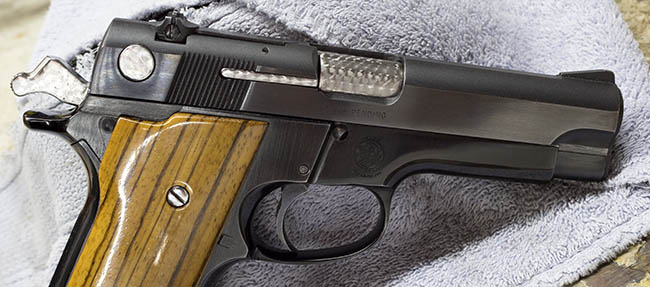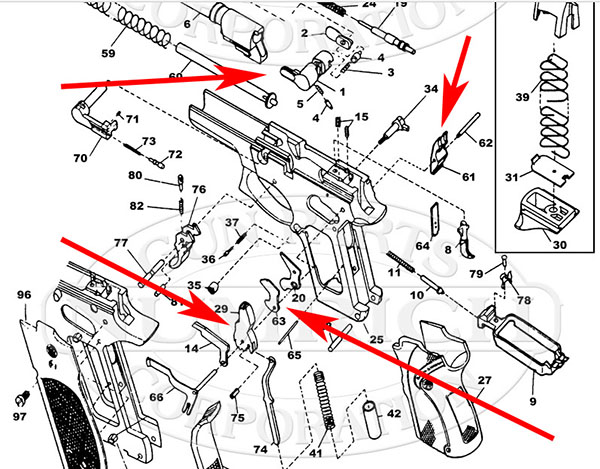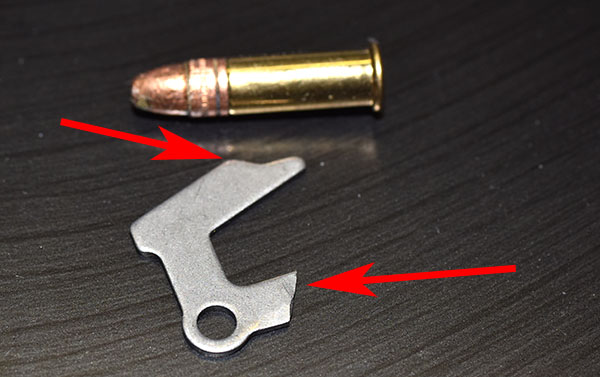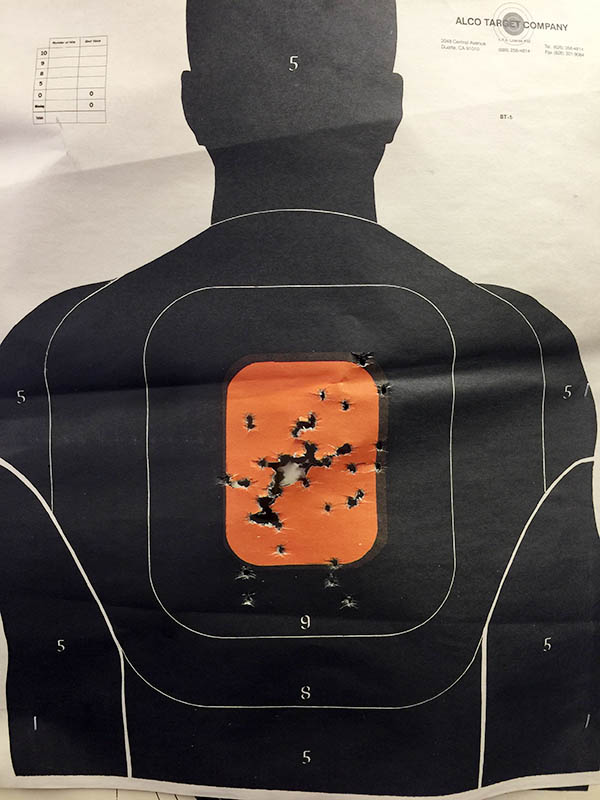After reading one of the blogs I posted on my most capable, TJ-customized Smith and Wesson Model 59, good buddy Tom commented that he had a Model 659. “I always wanted a Model 659,” I said.

Well, you know how these things go. One thing led to another, and now I do. Own one, that is. A Model 659. Tom gave me a super deal on his Model 659, and after a visit to an FFL dealer and waiting the Peoples Republik of Kalifornia’s obligatory 10-day cooling off period, I had (in Kalifornia’s infinite left-leaning wisdom) chilled sufficiently. I took possession of this latest addition to the ExNotes Armory, and let me tell you, this new-to-me 9mm is a honey.

The Model 659 was the follow-on in Smith and Wesson’s 9mm semi-automatic handgun evolutionary arc, and it sold riotously well. The 659’s all stainless steel construction gives it a comfortable heft and provides a stable firing platform. High capacity, 9mm, stainless steel, and an American manufacturer with a storied reputation: What’s not to like? Police departments turned to the Model 659 in droves. It was the right gun at the right time as police departments abandoned their .38 Special six-shooters and moved to 9mm autos.
Please click on the popup ads! It’s what keeps the lights on.
As the police armament evolution advanced, the Model 659 Smiths were superseded by yet even newer wunderguns, and used 659s became widely available when the police departments traded them in. I don’t know that this is my 659’s heritage, but I suspect it was. My 659 was well worn externally with lots of fine scratches in the metal work, it didn’t have hardly any internal wear (it hadn’t been fired much), and the safety decocker didn’t work the way it was supposed to. All these things were signs that pointed to lots of carry but little actual shooting.
First, the safety decocker. It’s that gizmo on the rear of the slide that drops and blocks the hammer, and on mine, when it was fully depressed, the hammer wouldn’t drop the way it was supposed to. I guessed it wore out from having been actuated a ton of times, which is probably what happened when whoever carried it put it away for the night every night. This issue was slightly complicated by the fact that Smith and Wesson no longer supports these pistols (that’s the bad news). The good news is that the old Numrich corporation purchased Smith and Wesson’s entire inventory of Model 659 parts (Numrich is now known as the Gun Parts Corporation, but everyone still calls them Numrich). That’s where I found what I needed. Numrich has exploded drawings of these (and many, many other) old guns on line, and you can dope out how older guns work and identify the parts you need. With the help of their isometric drawing below, follow along with me as I explain how this safety decocker thing works.

The 659 Smith decocker is activated by a thumb lever. It’s Find No. 1 in the above drawing. The thing fits into a through-hole at the rear of the slide. When you rotate the decocker down to the safe position, a slot in it pushes the sear release lever down, which is Find No. 63 in the above drawing. When that happens, the sear release lever rotates and acts on the sear, which is Find No. 29. When that happens, the sear releases the hammer (Find No. 61). When the hammer falls, it can’t hit the firing pin because the hammer’s fall to the firing pin is obstructed by the decocker having been rotated to the safe position (which brings us back to Find No. 1). It’s all very clever.
So, like I said above, when Smith went to their newer series of handguns, they sold all their remaining parts inventory to Numrich. Numrich had the new sear release lever, and it was only $4.50. Weirdly, I could have bought a used part from Numrich for $3.50, but the used part would be worn and it would probably not correct the problem I needed to fix (a problem which resulted from wear). It was a no brainer to me, so I splurged for the extra $1 and bought the new part (I’m cheap, but I’m not stupid). My new safety release lever arrived in the mail a few days later.

When the new sear release lever arrived, I had to strip the gun down to the bare frame. I installed the new sear release lever, but it needed to be fitted so that it actuated the hammer drop at the appropriate point in the decocker’s rotation. It was a matter of assemble the gun, try it, take it all apart again, file the sear release lever a little bit, reassemble the gun, try it again, and repeat the process until the decocker worked the way it is supposed to. The whole thing took me about an hour of disassembling, testing, filing, and reassembling. I like doing this sort of stuff. I imagine it’s a lot like resurrecting a 900cc Kawasaki.
The next step was to go to work on all the minor scratches on the gun’s slide and frame. That’s one of the great advantages of a stainless steel firearm. With a little bit of 600-grit sandpaper, you can keep a stainless gun looking new forever. I was really pleased with the way this one turned out. It looks like a new gun now. Nah, scratch that (pardon the pun). I think Smith finished these guns with 400-grit abrasive, which is a little rougher than 600-grit. Mine looks better than new. Polished, almost. It really is a thing of great beauty.
My standard 9mm load is 5.0 grains of Unique behind a 124 grain roundnose bullet, and I’ve got a bunch reloaded and packed away in my ammo locker. It’s an accurate load and it’s reliable. Yeah, I know, you can buy 9mm ammo cheaper than you can reload it these days. I don’t care. I like to reload. Logic doesn’t always prevail when it comes to guns and ammo.
I grabbed a few hundred rounds and it was off to the range for me and the 659. I was more than pleased with the results. I didn’t have a single failure to feed, fire, extract, or eject, and the 659 is accurate. It’s a lot of fun to shoot and the 9mm is a great cartridge.

Want to read our stories about the Model 59 and our other Tales of the Gun? Hey, it’s all right here!
The best reloading gear on the planet can be found right here!
We want you! Sign up for our ExNotes blogs!



The gun isn’t C&R so how did you get it DROS’ed? Is it still on the CA Handgun Roster? And if not how did you do it?
Bob, if a gun is not on the CA roster but it was previously purchased legally in California, it can be transferred legally through a FFL dealer.